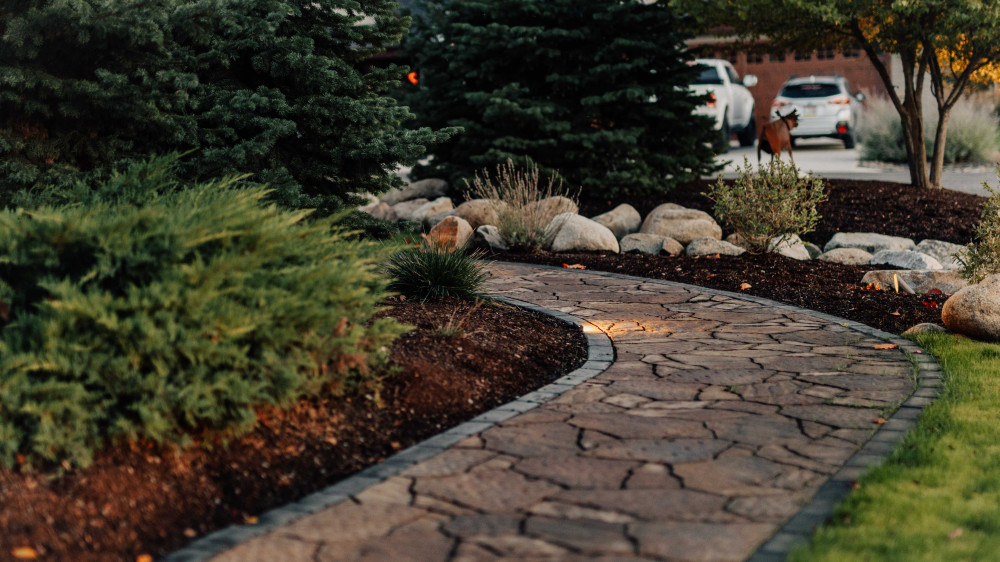In the art of landscaping, achieving harmony between landscapes and hardscapes (see our terms to know here), is essential for creating a balanced and visually appealing outdoor living space. When properly integrated all components work together seamlessly, enhancing the beauty and functionality while fostering a sense of harmony in your personal heaven on earth.
Landscapes and hardscapes offer contrasting textures, colors, and forms that can be used to create visual interest in your landscape design. For example, pairing lush greenery with sleek, modern hardscape materials like concrete or metal can create a striking contrast that draws the eye and adds depth to your outdoor space.
Focal points serve as visual anchors in your landscape design, drawing attention and creating a sense of balance and coherence. Incorporating elements such as water or fire features or architectural structures such as a pergola, or patio amidst landscapes and hardscapes can help establish focal points to your outdoor environment. These focal points also provide designated spaces for personalized outdoor use. If you and your family enjoy evenings by a fire, naturally there will be a designated space for a fire feature, or if you use your outdoor space to relax in the sun a patio of beautiful pavers and a water feature to enhance your own personal retreat.

Landscapes and hardscapes should be seamlessly integrated to create a sense of flow and movement throughout your landscape. Utilize pathways, garden borders, and transitions between different materials to guide the eye and encourage exploration of your outdoor space. A good design will provide cohesive and beautiful lines for the eye to follow throughout your space.
Pay attention to scale and proportion when designing your landscape to ensure that landscapes and hardscapes complement each other harmoniously. For example, large trees or shrubs can be balanced by expansive patios or retaining walls, while smaller plants and flowers can be paired with delicate pathways or garden borders.
Landscapes and hardscapes should not only be aesthetically pleasing but also serve functional purposes in your landscape design. Consider how each element contributes to the usability and practicality of your outdoor space, whether it's providing shade, defining boundaries, or creating seating areas for relaxation and entertainment.
Achieving harmony between landscapes and hardscapes requires careful planning and attention to detail. Consider seeking guidance from a professional landscaping company with expertise in landscape design to help you create a cohesive and visually stunning outdoor environment that reflects your personal style and enhances your quality of life.
In conclusion, balancing landscapes and hardscapes is key to creating a harmonious and visually appealing landscape design that seamlessly integrates nature and structure. By embracing contrast, establishing focal points, creating flow and movement, considering scale and proportion, incorporating functional elements, balancing maintenance needs, incorporating sustainable practices, and seeking professional guidance, you can achieve a landscape that enhances the beauty, functionality, and overall enjoyment of your outdoor space.